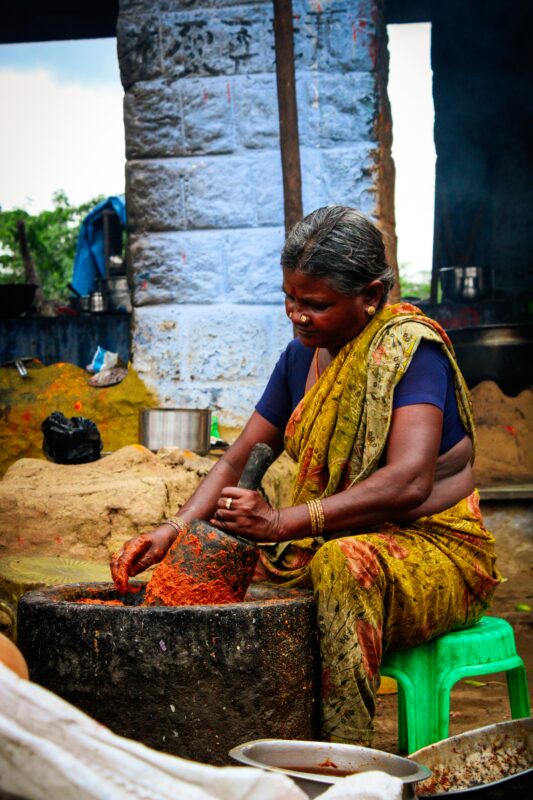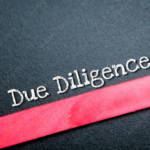Provided it is transparent and systemic, stakeholders’ role in Human Rights Due Diligence is essential. In this article, Ksapa explains how they allow business to operate in a more efficient and targeted manner.
On January 27, 2021, the European Parliament voted on a proposal for legislation to enforce greater corporate accountability. Human Rights due diligence would see companies assess and reduce their socio-environmental risks across their value chain. In other words, businesses are expected to disclose information on their supply chains and the effectiveness of their measures.
This proposal is only one of many examples demonstrating growing expectations for businesses to address ongoing crises. In fact, now more than ever, companies must prove the effectiveness of their accountability commitments, with respect to their suppliers in particular. This momentum was further reinforced by the United Nations Principles for Responsible Investment with the publication of Human Rights guidelines for investors. While new standards are being issued by various parties, the primary goal remains one and the same. The private sector must therefore actively safeguard Human Rights and do so throughout its value chains.
Beyond Social Audits: Human Rights Due Diligence Plans
Cross-value chain Human Rights due diligence is quite simply no longer a good-to-have. Instead, what is at stake is the acceptability of corporate operations.
Concrete expectations for Human Rights Due Diligence
As an example, US Customs can activate withhold-release orders to bar access to its colossal domestic market to products tied to allegations of Human Rights violations. Such a decision may apply to a specific company or a entire country, especially if one of its industrial sectors structurally undermines Human Rights. That is why the United States recently banned all cotton and tomatoes produced in the Xinjiang Uighur camps.
The Way Forward Lies Beyond Social Audits
Social audits are generally regarded as the prime antidote in the face of new market expectations and/or regulatory evolutions. However, such campaigns are costly and often require specific expertise. While certainly a step in the right direction, they are far from sufficient. Designing an effective Human Rights due diligence plan does not only imply mapping supply chain risks. It demands a proactive approach, where companies develop concrete solutions. It follows parent companies must also support business partners in Human Rights policy enforcement on the ground.
The crux of the matter, however, lies in controlling outsourcing and ensuring supply visibility overall. Consider the recent investigation into Boohoo. Among other infractions, it turns out the group relied on 500 suppliers, much more than its listed 50 first-tier suppliers. Following the revelation of modern slavery-like working conditions in its garment factories, Boohoo’s stock market valuation plummeted.
Without active dialog, there can be no sound understanding of supply chain dynamics, let alone satisfactory Human Rights commitments. In the age of social networks in particular, companies need not be caught red-handed to face consequences. Social media have in fact generalized a new form of dialog that is altogther continuous and transparent in essence. The major difference is that companies are generally devoid of any control. If invited to the debate at all, the very fact the Group enters in crisis management can indeed render it inaudible.
Understanding Stakeholders’ Role in Human Rights Due Diligence
The ongoing pandemic crisis illuminated (and increased) the fragility of global supply chains. Stakeholder expectations have meanwhile grown and rallied behind corporate duty of vigilance. The underlying issues have however only become more complex. As supply chains become increasingly fragmented, there are indeed all the more opaque.
Given that landscape, social audits are clearly a good tool for identifying risks. That said, Ksapa recommends going a step further, by activating risk remediation tools adapted to different operational contexts. In other words, the challenge for companies is not so much to align more resources to increase the number of their audits. They must in fact acknowledge the complexity of the exercise and that times demand they do better with less. Effective Human Rights due diligence indeed implies they operate in a more efficient and therefore targeted manner.
That optimization process necessarily relies on transparent and ongoing stakeholder dialog.
Effective Stakeholder Dialog Supports Human Rights Due Diligence
Stakeholder engagement is indeed a common denominator in all the measure we have just mentioned.
Defining Effective Stakeholder Engagement
It is defined as a solutions-orientated, multilateral dialog between a company and its stakeholders. As such, stakeholders are individuals, a group or an organization likely to positively or adversely influence project management, policy implementation of the launch of a new product, industrial endeavor or infrastructure development.
Risk mitigation starts and ends with developing a sound understanding of a company’s impacts. Because stakeholders are an integral component of that process, engagement measures must be systemic throughout the corporate project cycle. It is also necessarily proactive or woefully beside the point. Both internal and external stakeholders must be involved, albeit sometimes at different times or in different ways. Doing so allows a company to identify community development needs and opportunities. It also highlights the positive and negative impacts of its industrial operations. Finally, it stands as a prime solution to collect innovative ideas, identify potential partners and strengthen its reputation wherever it operates.
Stakeholder Engagement As a Bi-Directional Process
Approach stakeholder engagement as a bi-directional process, both bottom-up and top-down. First, stakeholder engagement processes in place relay Information from the field, thereby helping management potential human rights risks. Upon setting up a new project, a company will ikley engage communities on their rights and set up grievance mechanisms. This allows individuals to voice potential grievances related, for example, to excessive working hours or accidents. The goal in such a feedback loop is to ensure that the company makes the appropriate changes, both to manage grievances and ideally prevent future occurrences. Similarly, top-down dialog allows a company to nurture trusts among complex stakeholder ecosystems and suppliers in particular. It does so by transparently communicating on potentially sensitive – or in any case strategic – issues. This way, corporate management may ultimately verify the local relevance of its Group policies and processes.
How Stakeholders May Help Business Address Human Rights
Two sides of the same coin, these two stakeholder engagement modalities must be combined to be truly effective. As such, they imply companies develop a keener understanding of their ecosystems, not merely conduct another mapping exercise. The aim is ultimately for businesses to develop relationships based on trust throughout their value chain. That way, they can engage stakeholders capable of taking a critical look at possible violations of corporate policy. Further down the line, stakeholders might even to bring weak signals to their attention. Through greater supply chain visibility, companies garner a much clearer vision of possible risks and limits in their management processes. That is an obvious first step toward reaching the necessary remedial action.
Human Rights Risk Mitigation and Leadership Hinge on Stakeholder Dialog
Regulatory evolutions, greater investor expectations, renewed pressure from the civil society and consumers… Everything points to the imperative for companies to urgently address Human Rights risks.
A Mixed Corporate Response
In that respect, many have made bold commitments to ensure their proper respect across their value chain.
The benefits of engaging with stakeholders in relation to the company’s monitoring plan are numerous. They range from risk remediation to increased resilience and, with it, the activation of long-term economic gains and innovation dynamics… That said, many have been slow to implement these processes, too often regardless as non-essential or peripheral to core business. This is forgetting the strategic importance and, ultimately, the socio-environmental and even economic windfall of sustained stakeholder engagement.
A leader in the pharmaceutical industry for instance told us about the difficulty of engaging stakeholders once beset with crisis. Accused of blocking access to vital medicines in the 2000s, the Group faced commercial risks with very real legal ramifications. For lack of pre-existing instances of dialog, its Chairman was forced to speak out publicly. Interestingly investors had alerted it to the importance of social inclusion and due diligence. The company, however, had considered itself too disconnected from these issues to invest and investigate these topics. Thanks to a complete mapping of its stakeholders and structured engagement platforms, the company can now keep better tabs on the emergence of trends bound to affect its business model.
The Case for Greater Human Rights-Centric Engagement
Energy companies and infrastructure or even service providers all end up being taken to task for their failure to address global warming, human rights violations and now, the pandemic shock. Increasingly joining the fray are investors, not just non-profits and consumer groups. Field surveys in fact regularly reveal the involvement of household names in the forced displacements. Corollary results notably include land grabbing from local communities, the acceleration of deforestation, biodiversity loss or hydric stresses. Setting the tone for the global community, France voted a duty of vigilance law. Because of that, its multinationals will increasingly face lawsuits with clear legal, criminal, commercial and reputational repercussions.
As a result, development banks tend to condition their investments on robust impact assessments and stakeholder engagement strategies from projet inception onward. Applied systematically and transparently, these measures help businesses minimize risks. Conversely, not taking a proactive approach has major socio-economic consequences. This is particularly true when local operated are challenged by neighboring communities. For example, in 2017, neighboring communities to the Lima highway considered tolls excessive and organized particularly disruptive blockades. In November 2020, demonstrations resumed following allegations of corruption. Eventually, the absence or inadequacy of stakeholder engagement platforms generated additional costs and delays in projects. Both have had lasting impacts on Group reputation.
Conclusion | Time to Structure Human Rights-Centric Engagement
2021 is likely to be marred by social unrest. This is bound to elicit further Human Rights commitments from investors, regulators and companies alike. The complexities of today’s context can only make the sustainable transition as delicate as it is indispensable. Moving further than risk assessments, Human Rights due diligence demands companies probe, understand and report on their activities’ impacts. Without ongoing, open and transparent stakeholder engagement, no such process may hold.
Ksapa’s team regularly intervenes with international companies and investors to develop structured but tailored stakeholder engagement platforms. Our teams offer recommendations for businesses to optimize policies and processes. Moreover, they equip operational teams with solutions and methodologies adapted to the plurality of issues, diversity of players and local specificities. This way, a company can know if, when, where and how their operations may violate human rights. Crowning this complex piece of teamwork, client company Schneider Electric in fact received the Forum for Responsible Investment-A2C Award for best Duty of Vigilance plan in 2020.
Of course, such a participatory approach hinges on investing substantial time and resources. It also secures the relevance of community development projects and bolster the overall acceptability of corporate activities. Given the current uncertainty and stakeholders’ propensity for scandal, proactive investments will ultimately be less costly than crisis management… to say nothing its potentially lasting impacts.
Sona is a Consultant for the Advise team at Ksapa.
She graduate in international development from Sciences Po Paris, and has worked on sustainable models within a diverse number of industries. Previously based in Kuala Lumpur, Sona has also tackled social and societal issues for Total and the Galeries Lafayette Group and has analyzed the implementation of the Chinese carbon market from Beijing. Her experience in different markets have helped her use a global approach when building a sustainable performance.





